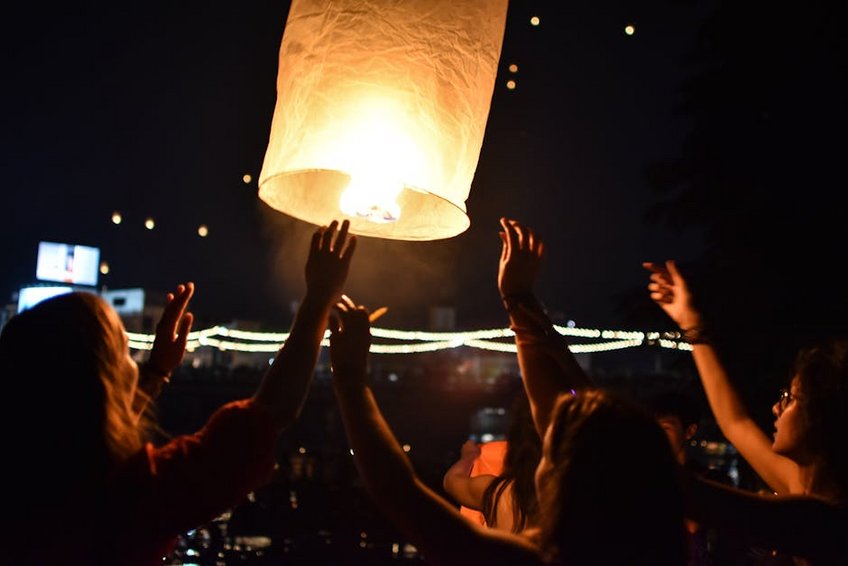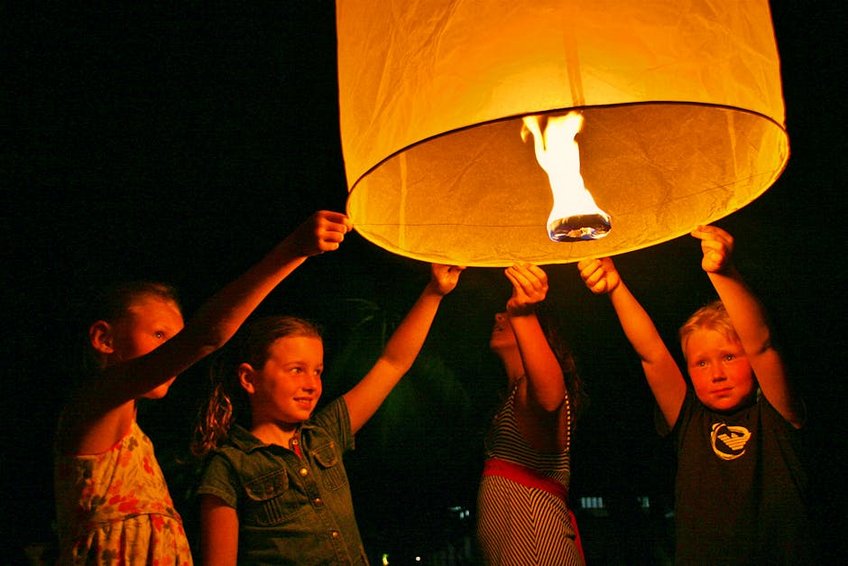Chiang Mai Lantern Festival: The Ultimate Guide to Yi Peng
Imagine thousands of glowing lanterns floating into the night sky, creating a river of light against the stars while the scent of incense and flowers fills the air. The Chiang Mai Lantern Festival, known locally as Yi Peng, is one of Thailand’s most magical and visually stunning cultural celebrations that transforms Northern Thailand into an ethereal dreamscape. This ancient Lanna tradition coincides with Loy Krathong, where people release decorated baskets onto waterways, but Yi Peng’s sky-bound lanterns create a spectacle unlike any other festival in the world. As someone who has experienced this festival multiple times, I can confidently say that witnessing the synchronized release of khom loi (floating lanterns) is a bucket-list experience that will stay with you forever. The Chiang Mai Lantern Festival represents renewal, gratitude, and the letting go of misfortunes, making it both a beautiful visual experience and a deeply spiritual journey. From the intricate paper lantern preparations to the breathtaking moment when the sky fills with light, every aspect of this celebration connects you to Northern Thai culture in the most profound way possible.
Chiang Mai Lantern Festival Essential Information – Dates and Significance
Understanding the cultural and historical context of the Chiang Mai Lantern Festival will significantly enhance your experience. Unlike fixed-date Western holidays, Yi Peng follows the Lanna lunar calendar, typically falling in November on the full moon of the second month. The 2024 festival is anticipated to occur around November 15th-17th, though exact dates are confirmed closer to the event based on lunar calculations. This timing means you’ll need to plan well in advance as accommodations fill up months ahead. The festival’s origins date back centuries to the ancient Lanna Kingdom, where Buddhist monks used lanterns to pay respect to the Buddha and people released them to symbolize letting go of negative thoughts and misfortunes. Today, it blends religious ceremony with community celebration, creating an atmosphere that’s both reverent and joyously festive. The Chiang Mai Lantern Festival isn’t just a tourist attraction—it’s a living tradition that locals participate in with genuine devotion and excitement.
Historical and Cultural Significance – What You Need to Know
- The festival originates from Brahmin traditions adopted by Thai Buddhists to make merit and show respect to the Buddha
- Releasing lanterns symbolizes letting go of negative thoughts, misfortunes, and past troubles for a fresh start
- The synchronized mass lantern release represents communal prayer and shared hopes for the future
- Budget traveler: $35-50 USD per day for hostels, street food, and free festival events
- Mid-range experience: $100-150 USD per day for 3-star hotels, restaurant meals, and paid event tickets
- Luxury celebration: $250-400+ USD per day for 5-star resorts, fine dining, and premium festival packages
- Tourism Authority of Thailand Official Site
- Lonely Planet Chiang Mai Travel Guide
Festival Timing and Lunar Calendar – Key Details
Because the Chiang Mai Lantern Festival follows the lunar calendar, dates shift annually between early November and early December. The main events always occur during the full moon, with celebrations spanning three days. The first day typically features temple ceremonies and lantern-making workshops, the second day includes the parade and initial lantern releases, while the final day hosts the massive synchronized release. This lunar timing means the festival occasionally overlaps with Loy Krathong (which follows the Thai lunar calendar), creating an even more spectacular combination of water and sky celebrations. For precise dates each year, check the Tourism Authority of Thailand’s official website about three months in advance, as last-minute planning for this event is nearly impossible due to its popularity.

Chiang Mai Lantern Festival Planning Your Trip – Logistics and Preparation
Attending the Chiang Mai Lantern Festival requires strategic planning unlike most other travel experiences. The city’s infrastructure, while generally adequate for tourism, becomes overwhelmed during this period with visitors from across Thailand and around the world. You’ll want to book flights and accommodation at least 6-9 months in advance, as prices skyrocket and availability disappears as the festival approaches. November falls within Chiang Mai’s cool season, with temperatures ranging from 18°C to 30°C (64°F to 86°F)—perfect festival weather though evenings can be surprisingly cool. Beyond logistics, mental preparation is equally important—this is not a quiet, solitary experience but rather a massive communal celebration where crowds, noise, and excitement reach fever pitch. Embrace the chaos as part of the adventure, and you’ll find the energy contagious rather than overwhelming.
Best Time to Visit Chiang Mai Lantern Festival
The absolute best time to experience the Chiang Mai Lantern Festival is during the three main festival days, but consider arriving 2-3 days early to acclimatize, participate in lantern-making workshops, and secure your spot at prime viewing locations. The synchronized mass lantern release typically occurs on the final evening around 7-9 PM, though timing can vary. Morning and afternoon hours during festival days offer cultural performances, temple visits, and local markets that provide deeper cultural context. If you prefer slightly smaller crowds, the days immediately before the main events still feature lantern releases and celebrations with 30-40% fewer visitors. However, for the full spectacular effect, being there on the peak night is worth navigating the crowds.
Budget Planning and Costs for Chiang Mai Lantern Festival
Essential Preparation Checklist
Preparing properly for the Chiang Mai Lantern Festival will dramatically improve your experience. First, ensure you have comfortable walking shoes as you’ll be on your feet for hours navigating crowded streets. Pack light layers—evenings can be cool while days remain warm. Bring a power bank for your phone since you’ll be taking countless photos and videos. Most importantly, book any paid events or tours months in advance through reputable companies like TakeMeTour or local Chiang Mai agencies. Download offline maps as cellular networks become overloaded during peak times. Learn a few basic Thai phrases like “sawasdee” (hello) and “khob khun krap/ka” (thank you) to enhance interactions with locals. Finally, bring cash in small denominations as street vendors and smaller establishments may not accept cards during the busy festival period.
Chiang Mai Lantern Festival Top Attractions and Activities
The Chiang Mai Lantern Festival offers an incredible array of experiences beyond the main lantern release that many visitors overlook. Throughout the three-day celebration, the city transforms into a cultural playground with temple ceremonies, traditional dance performances, night bazaars, and lantern-making workshops. The old city moat becomes lined with food stalls offering Northern Thai specialties while ancient temples host candlelit ceremonies that are open to respectful visitors. One of the most magical aspects is how the entire community participates—from school children creating handmade krathongs (decorative floats) to elderly residents teaching lantern-making techniques to interested foreigners. This creates numerous opportunities for authentic cultural exchange that goes far beyond typical tourist experiences. Whether you’re watching Lanna dancers perform ancient stories or learning to make your own banana leaf krathong, every moment feels connected to centuries of tradition.
Must-See Highlights of Chiang Mai Lantern Festival
No visit to the Chiang Mai Lantern Festival is complete without experiencing these essential moments. The Mae Jo University mass lantern release (though increasingly regulated) remains iconic, where thousands of participants release lanterns simultaneously creating an unforgettable celestial spectacle. The Yi Peng Parade features elaborate floats, traditional costumes, and dancing that winds through the old city streets. Visiting Wat Phan Tao during the festival provides a breathtaking scene with its entirely teak architecture illuminated by countless lanterns and candles. The Tha Phae Gate area becomes the epicenter of celebrations with live music, food vendors, and spontaneous lantern releases throughout the nights. Finally, don’t miss the krathong releases along the Ping River where flickering floats create pathways of light on the water—a perfect complement to the sky-bound lanterns.
Hidden Gems and Local Favorites
While most visitors cluster around the main tourist areas, savvy travelers can discover more authentic experiences during the Chiang Mai Lantern Festival. Local neighborhoods often host their own smaller lantern releases that feel more intimate and community-focused. The Nong Buak Hard Public Park offers a quieter alternative to the crowded main sites while still providing beautiful views of lantern-filled skies. Many temples outside the old city walls, like Wat Umong or Wat Suan Dok, host beautiful ceremonies with far fewer tourists. For a truly unique perspective, consider booking a dinner cruise on the Ping River to witness both water and sky celebrations simultaneously. Early mornings during festival days reveal another magical dimension as you watch monks collecting offerings and see the remnants of the previous night’s celebrations being respectfully cleared—a peaceful contrast to the evening’s excitement.
Chiang Mai Lantern Festival Practical Travel Information
Navigating Chiang Mai during the festival requires understanding the practical realities of transportation, accommodation, and festival regulations. The city’s infrastructure, while generally tourist-friendly, becomes significantly challenged during this peak period. Roads around the old city and Ping River close to vehicles, making walking the most efficient transportation method within the festival zones. Tuk-tuks and songthaews (red trucks) still operate but charge premium rates and face significant traffic delays. Perhaps most importantly, regulations around lantern releases have tightened in recent years due to safety and environmental concerns—always use biodegradable lanterns and only release in designated areas to avoid fines. Accommodation prices typically double or triple during festival dates, and minimum stays of 3-5 nights are common. Despite these challenges, with proper planning, the experience remains absolutely worthwhile.
| Category | Options/Features | Price Range (USD) |
|---|---|---|
| Accommodation | Hostels to 5-star resorts, book 6+ months ahead | $25-400+ per night |
| Festival Events | Free temple events to paid premium experiences | $0-150 per event |
| Food & Drink | Street food to fine dining restaurants | $3-50 per meal |
| Local Transportation | Tuk-tuks, taxis, songthaews, walking | $2-20 per ride |


